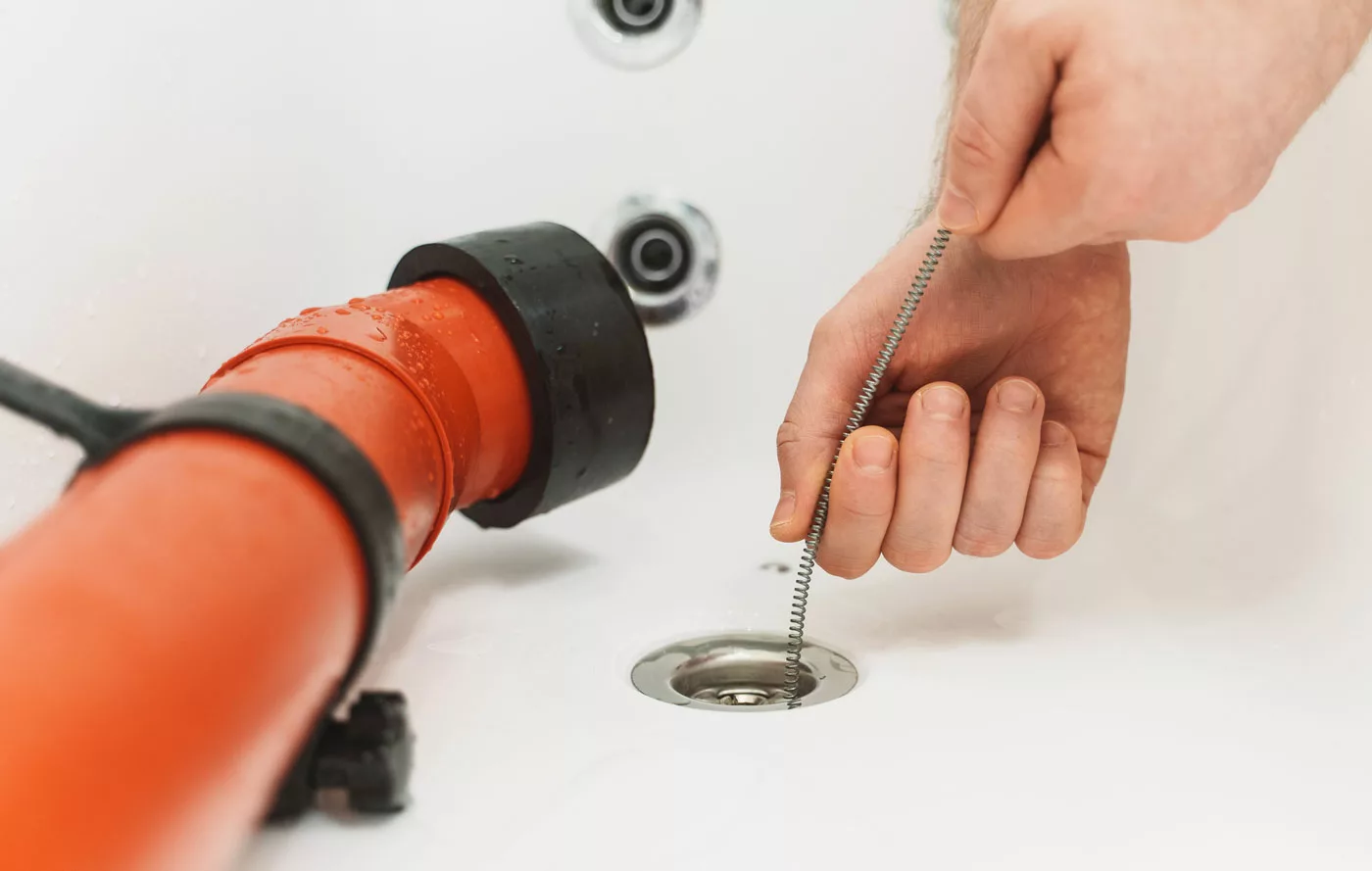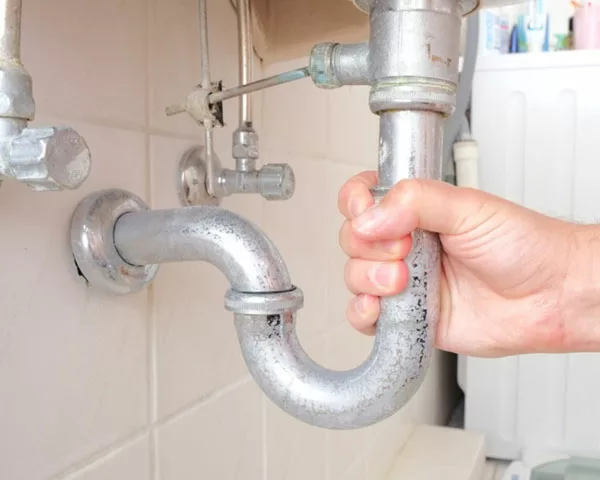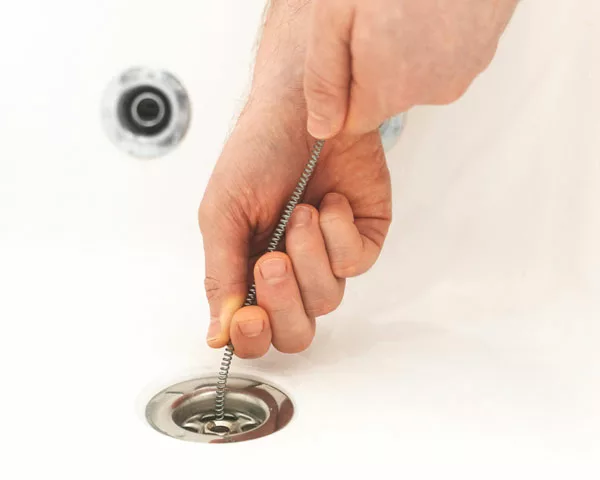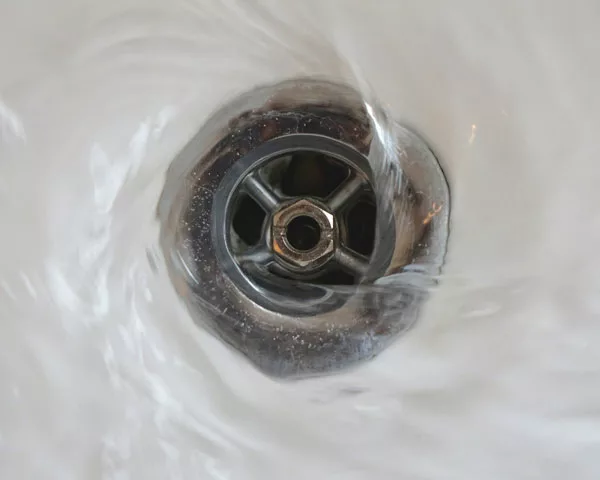
Whether it’s a toilet that won’t flush properly or a sink that is slow to drain, sometimes a plumbing snake is needed to help clear clogs in your home’s plumbing system. Learning how to clear clogs yourself can not only save you time, but will ultimately help prevent costly repairs in the future. A plumbing snake is a simple, inexpensive tool that you can use yourself for minor plumbing issues. Learn about when and how to use this tool, and you will greatly improve your home’s plumbing system.
WHAT IS A PLUMBING SNAKE?
A plumbing snake is a device that can be used to remove clogs that block drains and pipes inside your home. A traditional plumbing snake has an enclosed conical shape with a flexible wire spool wound around it. At the end of the metal line will be a helix-shaped hook or similar attachment that is meant to come in direct contact with the clog inside of your pipe. You will need to crank the plumbing snake to move the hook throughout the pipe until it comes into contact with the clog. The plumbing snake will shred the material and unclog your system.
Many people get plumbing snakes confused with drain augers. It’s important to note that drain augers are typically utilized by professionals and are meant to open clogged sewer drains from the exterior of a home.
WHEN SHOULD YOU USE A PLUMBING SNAKE?
You want to think of a plumbing snake as a tool that you can utilize after a plunger doesn’t work, but before you call a professional to use a drain auger. There are many different signs that can alert you to a fully or partially clogged drain in your home, which would indicate it’s time to get your plumbing snake out including:
- Water backups into a sink, shower, or toilet
- Foul odor coming from your drains
- Bubbling or gurgling noises
- Slow draining
- Puddles of water near your sink, toilet, bathtub, shower, or laundry area
You never want to let these issues go, as they can continue to back up over time and create an even bigger hazard.
HOW TO REMOVE A CLOG WITH A PLUMBING SNAKE?
- START BY REMOVING YOUR P-TRAP
Every drain will have a P-trap beneath it. This curved piece of piping connects the sink to your larger drainpipe system. Most P-traps are made of PVC and have quick connections that can be unscrewed by hand or with an adjustable wrench.
It’s typically a good rule of thumb to remove this P-trap before you insert the plumbing snake to make it easier to get into your drain pipe. If you were to leave the P-trap in place, you would have to remove the inside of the drain and try to go around the P-trap curve. Therefore, it’s important to know that you should check the inside of your P-trap to see if the clog is present there first. If so, this could save you from having to snake your piping at all.
- THREAD THE HEAD INTO YOUR PIPING
Pull out a couple of inches of the snake and insert the head manually into your pipe, without forcing the snake into the drain. Once you get the head of the plumbing snake into the piping, you’ll want to start uncoiling the snake by using its handle. Resist uncoiling too much of the metal line.
You should slowly uncoil the metal line so that the handle of the plumbing snake is as close to the entrance of the pipe as possible. Continue uncoiling the metal line in a relatively slow and consistent manner. As soon as you feel pressure on the cable, you’ve encountered the obstruction.
- BREAKING UP THE OBSTRUCTION
Once you get that pressure on your mental line, you’ll want to start moving the plumbing snakehead back and forth and up and down. The idea is to slowly break up the obstruction into smaller pieces that can move down your drain pipe. You don’t want to jam the drain snake into the walls of your piping. If you do, you’ll hear scraping noises that will alert you that you’re not on the obstruction.
It’s not uncommon for your plumbing snake to get stuck in the obstruction. Pull it back out if it feels like your plumbing snakehead won’t move at all. Oftentimes, the obstruction will actually come out with the plumbing snake. Your goal should be to either pull the obstruction out to you or, keep moving back and forth on the obstruction until you no longer feel its resistance.
- RE-ASSEMBLE YOUR DRAIN
Once you clear out the obstruction from your piping, you can remove your plumbing snake and rinse the snake off with water to remove any stuck-on debris. Then, re-install your P-trap and turn your water fixture on. You want to test out the water fixture to ensure that it’s draining properly before you put your plumbing snake away. Make sure that you let the water run for at least a few minutes so that if there is still a clog present, you’ll be alerted when the water fills up the entire pipe to where your sink drain is.
TIPS FOR PREVENTING CLOGS
While knowing how to use a plumbing snake and having one on hand is always recommended, one of the best things that you can do for your household plumbing is to be mindful of what goes down the drain in the first place. When it comes to your kitchen sink specifically, you should be using a sink strainer to prevent unwanted garbage and small items from entering your drain pipe.
Finally, do not dispose of grease and oily waste down your sink. The substances can solidify in your pipes, creating an adhesive that traps other items such as hair and coffee grounds. Over time, this can cause a clog and stop your entire system from draining. It is best to dispose of these products in disposable containers or jars.
RELIABLE PLUMBING SERVICE
Beyer Plumbing Co. offers reliable plumbing services for the San Antonio, TX community. We can also help with all of your construction plumbing, hot water heater, water softener, water quality, leak detection, drain cleaning, and commercial services. Simply contact us today to get the help that you need.





